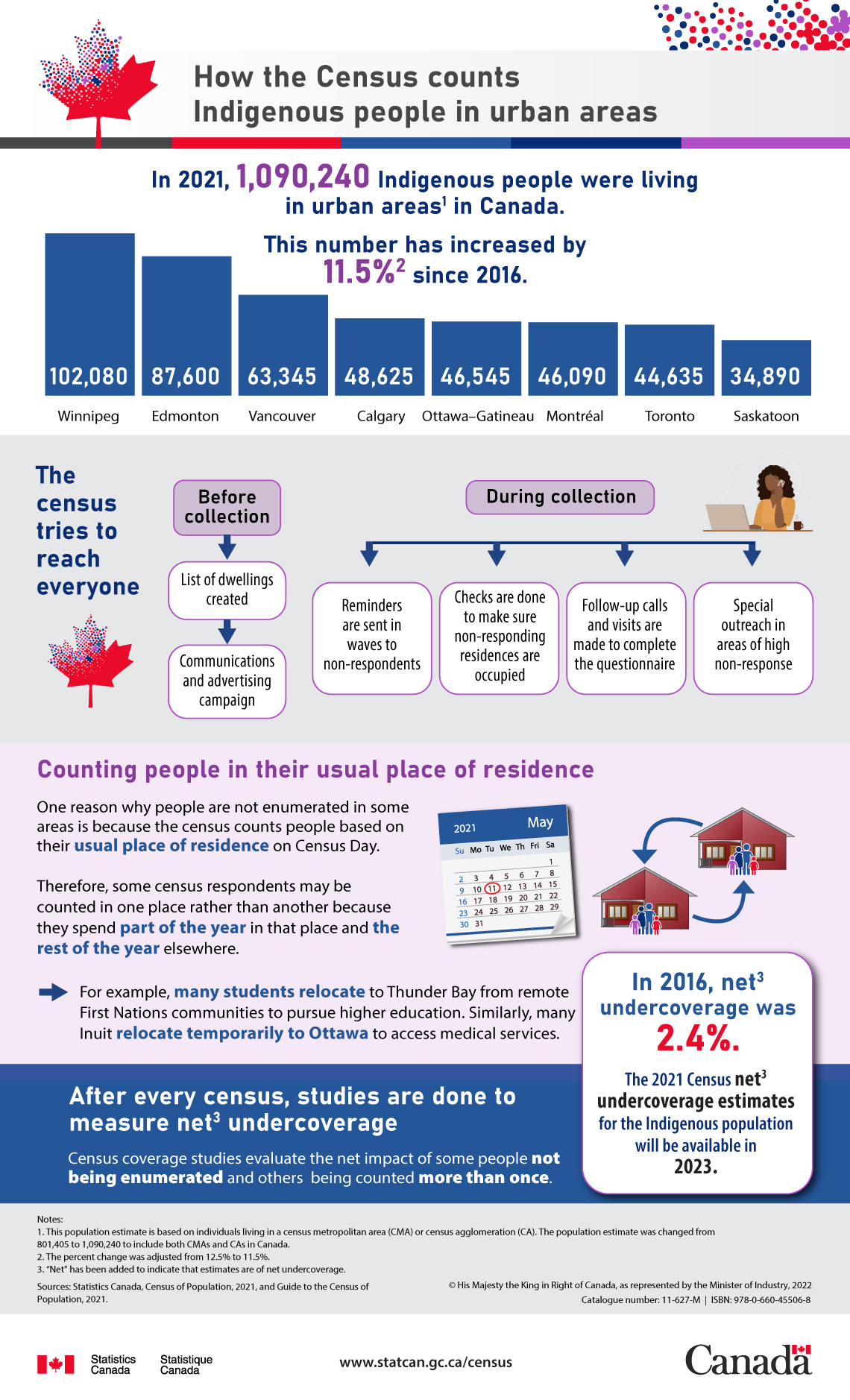How the Census counts Indigenous people in urban areas
Archived Content
Information identified as archived is provided for reference, research or recordkeeping purposes. It is not subject to the Government of Canada Web Standards and has not been altered or updated since it was archived. Please "contact us" to request a format other than those available.
Correction Notice
Corrections have been made to this product. Please take note of the following changes:
The infographic has been changed to include census metropolitan areas (CMAs) and census agglomerations in Canada in the context of urban areas. The previous version included only CMAs. “Net” has been added to indicate that estimates are of net undercoverage.

Description: How the Census counts Indigenous people in urban areas
In 2021, 1,090,240 Indigenous people were living in urban areasNote 1 in Canada.
This number has increased by 11.5%Note 2 since 2016.
| Census Metropolitan Area (CMA) | Indigenous population |
|---|---|
| Winnipeg | 102,080 |
| Edmonton | 87,600 |
| Vancouver | 63,345 |
| Calgary | 48,625 |
| Ottawa–Gatineau | 46,545 |
| Montréal | 46,090 |
| Toronto | 44,635 |
| Saskatoon | 34,890 |
The Census tries to reach everyone
Before collection
List of dwellings created
Communications and advertising campaign
During collection
Reminders are sent in waves to non-respondents
Checks are done to make sure non-responding residences are occupied
Follow-up calls and visits are made to complete the questionnaire
Special outreach in areas of high non-response
Counting people in their usual place of residence
One reason why people are not enumerated in some areas is because the census counts people based on their usual place of residence on Census Day.
Therefore, some census respondents may be counted in one place rather than another because they spend part of the year in that place and the rest of the year elsewhere.
For example, many students relocate to Thunder Bay from remote First Nations communities to pursue higher education. Similarly, many Inuit relocate temporarily to Ottawa to access medical services.
After every census, studies are done to measure netNote 3 undercoverage
Census coverage studies evaluate the net impact of some people not being enumerated and others being counted more than once.
In 2016, netNote 3 undercoverage was 2.4%.
The 2021 Census netNote 3 undercoverage estimates for the Indigenous population will be available in 2023.
Sources: Statistics Canada, Census of Population, 2021, and Guide to the Census of Population, 2021.
- Date modified:
